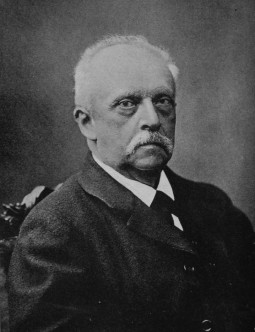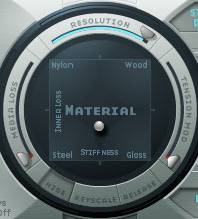
Wondered what the fuss is about physical modeling? This
synthesis technique surfaced years ago, but you're going to be seeing a
lot more of it thanks to faster CPUs. Here's a snapshot explanation of
what it is and how it came to be.
Why you need it:
A violin is not a sine wave: Traditional analog synthesis builds
sounds out of simple waveforms. That's great — except real-world sound
is much more complex — as you've no doubt noticed if, for instance,
you've heard a kid trying to learn violin. Online math magazine +plus
(named for addition, the one kind of math I can actually do!) has a
great explanation of why a violin is so hard to play. Weirdly, violin string move in v-shapes, not parabolas.
Thank Hermann: Super-renaissance man (physicist AND physician) Hermann von Helmholtz
figured that out along with various other secrets of timbre in his FREE
time — you know, when he wasn't busy working out the law of
conservation of energy in physics, inventing the opthamaloscope, or
solving the mysteries of human sight. (All that despite having a P.E.
teacher for a dad — okay, gymnasium headmaster, but still!)
That was 1863, though. It took a bit longer to apply our understanding of how instruments work directly to synthesis:
How it evolved:
Moving to currently-alive super-smart-people, we have modern
physical modeling work. This describes a set of related models for how
instruments work, from what happens to a surface when you blow on it
(flute) to what happens when you bow it (violin).
Stanford CCRMA: Stanford University deserves much of the credit for the original research into physical modeling,
which they've detailed in a (somewhat-outdated) page with online and
paper bibliography. Some of their work on NeXT workstations morphed
into Windows/Mac software for the Korg OASYS (see below). The NeXT
software lives on as MusicKit, which is OS X-, Windows-, and Linux-compatible.
90s commercial research: This history
talks about the modern evolution of physical modeling. Keyboard
Magazine covered Yamaha's new-fangled VL-1 in 1994 (none other than
current editor Ernie Rideout), but the expensive tech (US$5000) didn't
catch on at the time. Ernie's quote at the time, though, still applies
to modern physical-modeled synths: "You'll want to practice,
guaranteed, and not only just to program clever assignments but to see
how far you can take things, where the boundaries are, can you exceed
them, can you push them, and so on. Heck, you'll want to just play the
thing."
Korg OASYS: It took Korg quite some time to get the research to work as a product, as Joe Bryan (now with Universal Audio) told Sonikmatter in an interview.
The first PCI-based OASYS appeared in 1993, but in 2002 Joe noted "An
OASys style keyboard is still a dream, although it'll take a serious
commitment to pull it off correctly. I wouldn't be surprised if Korg
was busy working on one right now." Funny you should say that, Joe . .
. (see below)
And how it works: Harmony Central has a great 1996 article by Scott Lehmann explaining how physical modeling actually works.

How to get it now:
If you want to try your hand at physical-modeled synths right now,
you suddenly have lots of options, because what once took computers
days to render can finally happen in real time:
Hardware synths: The Alesis Fusion and Korg OASYS
keyboards, both introduced last month at NAMM, each feature the latest
in physical modeling technology alongside analog-style synthesis.
Software: Primitive implementations are available in
MusicKit and even Csound, but if you want something that sounds good,
you're best off with one of these options:
- Sculpture
in Logic Pro 7 is right now the best physical modeling implementation
I've seen. (Not available in Express; Mac only of course!) - Ugo's free String Theory synth for Windows VST is a decent implementation, and the price is right!
- Upcoming String Studio looks to be a bit simpler than Sculpture, taking advantage of physical modeling technology from Tasman. (Windows/Mac)
So get out there and play! Did I miss anything?